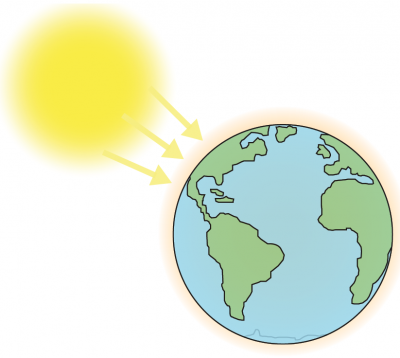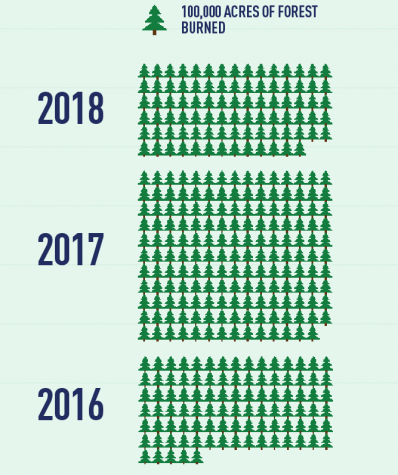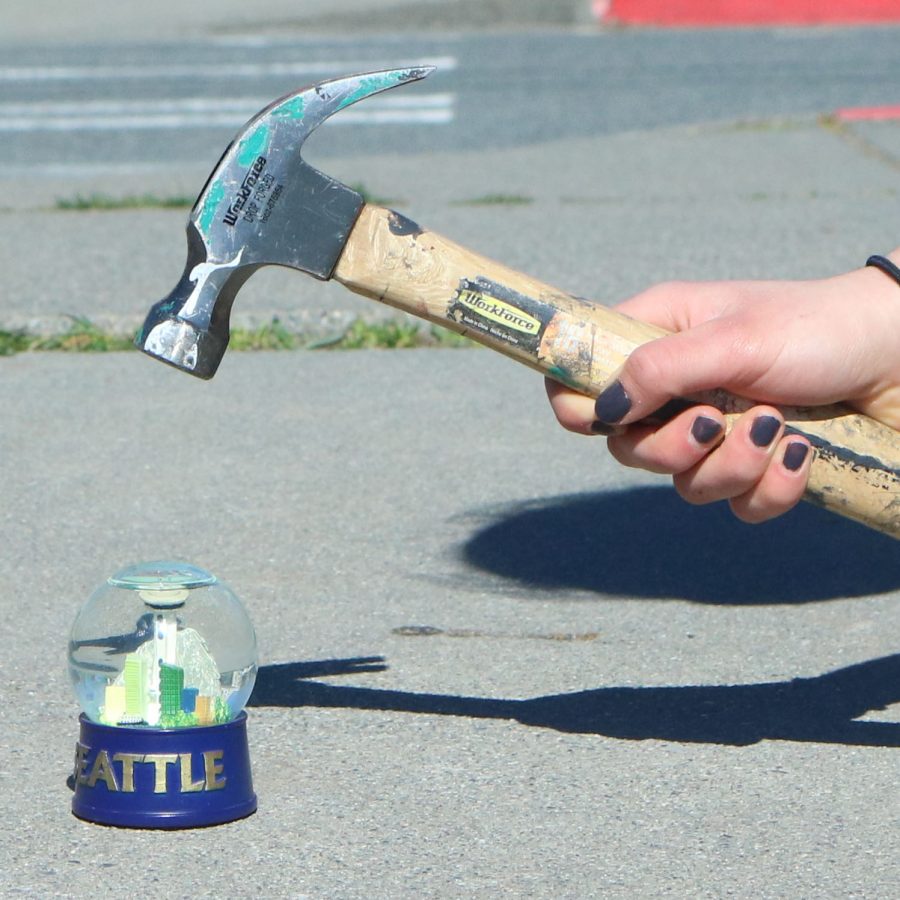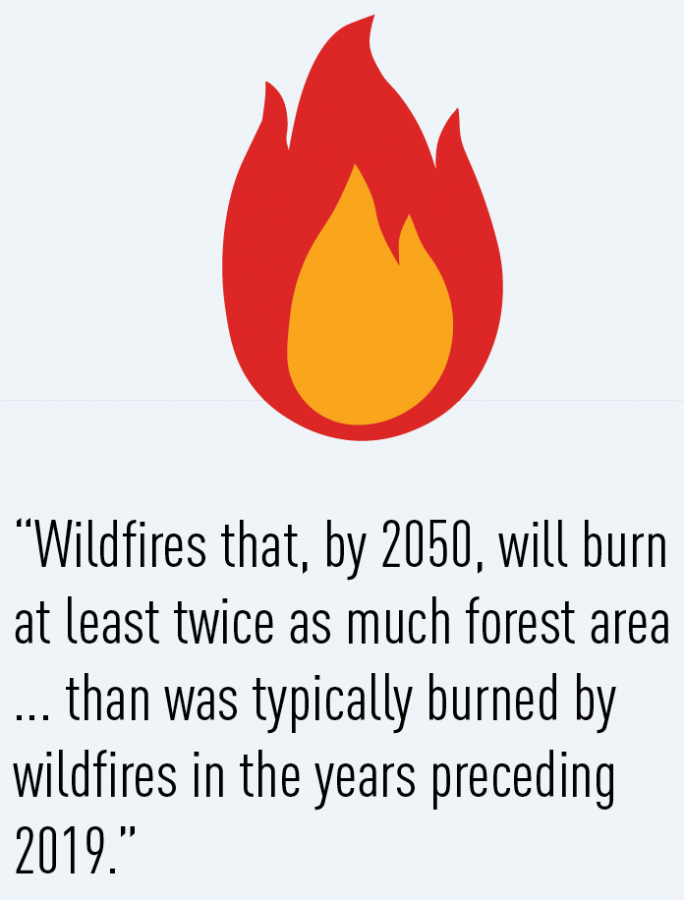An Impending Threat
As the clock runs down, Seattle plans to adapt to the changing climate
May 22, 2019
Rising sea levels, changes in climate and global warming are some of the biggest challenges our generation is faced with. But why is it happening, and what will happen in the near future?
According to NASA, the industrial activities that our modern civilization depends upon have almost doubled the levels of atmospheric carbon dioxide in the last 150 years. NASA’s report also concluded that there is more than a 95 percent probability that human-produced greenhouse gases such as carbon dioxide, methane and nitrous oxide have caused much of the observed increase in Earth’s temperatures over the past 50 years.
These historic emissions of greenhouse gasses have impacted and will continue to severely impact the global climate due to the greenhouse gas effect. While these impacts will be felt around the world, coastal cities, such as Seattle, are more vulnerable to the repercussions due to risks of flooding, coastal erosion, corrosion and difficulties with urban draining. By not taking initiative on these issues, there is an ever-increasing likelihood that exposed communities will be faced with detrimental climate-change-related impacts.
According to the city’s Office of Sustainability and Environment, the Pacific Northwest is projected to experience a multitude of damaging consequences. These consequences include increasing ambient temperature, wetter winters, drier summers, increased flood risk, declining snowpack, rising sea levels and increasing acidification of Puget Sound waters. When asked about the global ramifications of climate change, Environmental Science teacher Matt Palubinskas explained some of the possible dire outcomes.
“Glaciers will recede in the Arctic and Antarctic. Sea levels will rise. A large percentage of the world’s population live along the shorelines which will be affected immediately. Climate change will ultimately displace people, destroy property and infrastructure, and shift local weather patterns,” Palubinskas said.
The Greenhouse Gas Effect

Photo: Graphic: Wally Bargeron
The consensus among climate scientists is that the global warming trend is due human to addition to the greenhouse gas effect. Analogous to a greenhouse in a garden, the Earth traps the heat of the sun in its atmosphere.
Certain gases in the atmosphere block heat from escaping. Long-lived gases that remain in the atmosphere and do not respond physically or chemically to changes in temperature are described as the cause of climate change.
The primary gasses that contribute to the greenhouse effects include: Carbon dioxide, Methane, water vapor, nitrous oxide, and chlorofluorocarbons.
Water vapor is the most abundant greenhouse gas. It acts as an extremely influential “feedback” to the climate. As the Earth’s atmosphere warms, the amount of water vapor increases, resulting in an increased chance of clouds and precipitation.
Carbon dioxide (CO2) is a very important component of the atmosphere. CO2 is released through natural processes such as respiration, volcano eruptions and through human activities such as deforestation, land use changes and burning fossil fuels. Humans have increased atmospheric CO2 concentration by more than a third since the Industrial Revolution began. This increase in CO2 has been directly correlated with a global increase in temperature.
Forest Fires: A Local Concern
 Forest fires target states like California and Washington, as well as other areas of North America. These fires not only cause devastation to the area, but also kick smoke into the air that floats for hundreds of miles.
Forest fires target states like California and Washington, as well as other areas of North America. These fires not only cause devastation to the area, but also kick smoke into the air that floats for hundreds of miles.
Seattle had intense smoke in the late summer of last year. The Seattle Times reports that the smoke probably originated in Canada, but was blown south of the border to Seattle.
Those at risk include California had a historically bad year in terms of wildfires last year — according to a state government site, 3 of the top 20 largest fires (in terms of acreage) in the state’s history happened last year in 2018, and accounted for more than 800,000 acres burned.
One fire alone, the Camp Fire, was responsible for the destruction of more than 18,000 structures.
In the United States, tens of millions of acres of forest have burned in the past few years, as illustrated. Each row of trees represents 1.4 million acres of forest.
Homegrown Solutions
The City of Seattle has already taken solid steps towards fighting climate change, at least on a local level.
For one, the city instituted a plastic straw ban in 2018 that extends to other plastic silverware as well, this coming with the threat of a hefty fine if Seattle businesses do not comply.
Seattle also has extensive rebate programs for appliances with an Energy Star certification, rain gardens and free rain barrels that prevent heavy rainstorms from having a devastating effect on the Seattle sewer system.
The City of Seattle identifies four main areas where climate change will hit Seattle the most: higher temperatures, wetter winters, drier summers and rising sea levels.
Palubinskas thinks that action against climate change will happen when people come together.
“There are limited actions for the individual,” he said. “The individuals need to collect and put political pressure on the individuals or corporations that have the power to make real change.”
In federal politics, some lawmakers are taking responsibility for new sustainable environmental law. Alexandria Ocasio-Cortez, freshman house rep from New York state, has proposed the “Green New Deal.”
According to the Green New Deal House resolution, the threat that Climate Change poses means “the United States must take a leading role in reducing emissions through economic transformation.”
Among other things, the resolution calls for massive emissions cuts by 2030, and “net-zero global emissions” no later than 2050.
Washington state Governor Jay Inslee, who is running for the democratic nomination for president, has made the fight against climate change his battle cry. On his campaign website, he called climate change “the defining issue of our time.”
“Whether we shrink from this challenge, or rise to it, [climate change] is the biggest question we face,” the site also said.

